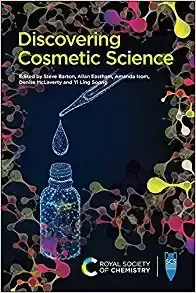Resources for Hair Stylists
Having some basic understanding of cosmetic chemistry can really set you apart in the industry. An understanding of how your product work can help you save money and allow you to use product with confidence.
It’s Just Marketing
One of the things mentioned in the message was that stylists only get the information from the brand. Meaning they are only getting it from the marketing. Which is a problem. Of course the company want you to know how to use the product. They also like to mention the benefits that the product has. However that is marketing and most of the time it is over stretched. So take the marketing information with a grain of salt.
Be Careful with Claims
Remember that cosmetics can not dose, cure, or treat anything.
Hair is Dead
Hair is not alive so we can not say that it can be repaired. What is actually happening is there is an ingredient that is coating the hair and making it look like there are not split ends.
Moisturization Vs. Hydration
This is a simple one. Hydration is related to water. Moisturization is related to oils. Saying hydrating argan oil is a misnomer.
How Shampoo Works
Shampoos are designed to cleanse the hair and scalp of dirt, sebum, sweat, and other products. Shampoos are typically surfactant based products. They are a blend of mild surfactants that create foam as they are massaged into the hair. The foam is actually not what is cleaning. Foam is when surfactant molecules encapsulate air. When it is doing that it is not cleaning the hair. That is why foam does not necessarily mean clean. After using a shampoo your hair and scalp should feel clean but not squeaky clean. Your scalp should not feel dry. Shampoos should a pH between 4.3 to 4.5. In this acidic pH, the cuticle is sealed. As the pH increases, the cuticle raises. This means that the hair is more prone to damage. This is how hair is chemically treated. The cuticle is opened by a high pH, and then chemical that alter the bonds or oxidize the hair come in a do their thing.
Anyway, the pH is important for hair health. If you do use a product with high pH then you can use something with a lower pH to help.
Shampoos works because of the surfactants that are in them. Surfactant have a polar and nonpolar ends. So they can attract things like dirt, sebum, and other hair products with their non-polar end. And then it is washed out with water. Basic shampoos typically contain water, anionic surfactants, amphoteric surfactants, nonionic surfactants, thickener, and a preservative.
Sulfates
Sulfate Ion
First you need to know what a sulfate it. Sulfates are a type of surfactant that has a sulfate ion attached to a carbon chain.
Sodium Octyl Sulfate
How Conditioners Work:
Conditioners are emulsions; they have a water phase and an oil phase. In their most basic preparation, they are simply a blend of distilled water, cationic (positively charged) emulsifiers, oil, antioxidants, and a preservative. The emulsifier brings the oil and water together. They are also doing the conditioning. Assuming that you are using a cationic emulsifier.
Conditioner are oil-in-water emulsions, meaning the water phase is an external phase. The heated oil-phase consists of the emulsifier, oils, and fatty alcohols. The oils that you use and the percentage will be based on your hair type. Fatty alcohols increase viscosity, improve stability, and improve conditioning properties. Although alcohol is in the name they are emollients due to the long fatty chain. The final phase is the cool down phase. This is where all your heat-sensitive ingredients go, such as your preservative, antioxidant, and fragrance. Make sure to check with your supplier for what temperature that you can add them in. I would go 1-2 degrees what they suggest.
Water
Water is very versatile and important molecule. It is not a filler in cosmetics. Water is also the major culprit for color fading.
Your Cosmetics Are Not Killing You
With the clean beauty movement, there has been a lot of misinformation on ingredients. Know that anything that is in your cosmetics from a reputable supplier has had adequate testing done to deem it safe.
Fragrance
Fragrance is there to make the experience more enjoyable. It fragrances the hair which most people enjoy. Unless you are reacting to fragrances they are generally fine.
We all Have Access to the Same Ingredients
There is also a lot of misinformation about product as well. As a formulator i have just about the same excess to ingredients. the final formulation will depend on a lot of factors. I know that you can make money off the sales but do not mislead clinets just to get a sale.
Allergies
This is a really hot topic. It has been blamed on so many things but the reality is it is really hard to pinpoint what is going to cause someone an allergy. It makes it really important to do a test patch.
Resources
General Websites:
https://www.cosmeticsinfo.org/
https://www.cir-safety.org/
https://www.fda.gov/cosmetics/cosmetic-products-ingredients/cosmetic-ingredients
https://www.furphies.org.au/cosmetics--personal-care.html
https://www.theecowell.com/
Book
This is an excellent book for the basics on a wide variety of topics. This is not sponsored, I bought it with my own money.



